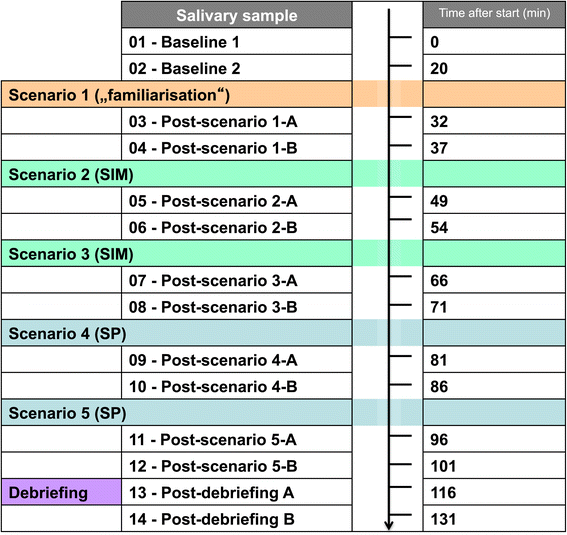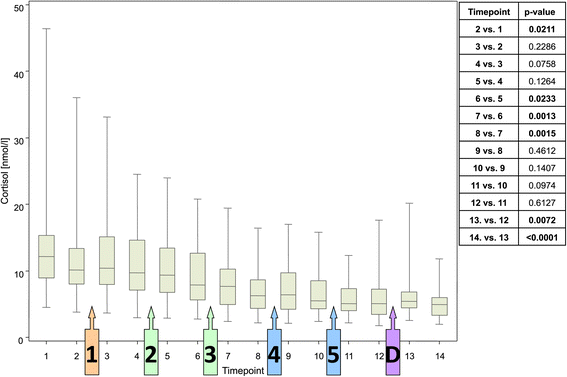Cortisol and alpha-amylase as stress response indicators during pre-hospital emergency medicine training with repetitive high-fidelity simulation and scenarios with standardized patients
- PMID: 25887044
- PMCID: PMC4393871
- DOI: 10.1186/s13049-015-0110-6
Cortisol and alpha-amylase as stress response indicators during pre-hospital emergency medicine training with repetitive high-fidelity simulation and scenarios with standardized patients
Abstract
Background: In emergency medicine, the benefits of high-fidelity simulation (SIM) are widely accepted and standardized patients (SP) are known to mimic real patients accurately. However, only limited data are available concerning physicians' stress markers within these training environments. The aim of this pilot study was to investigate repetitive stress among healthcare professionals in simulated pre-hospital emergency scenarios using either SIM or SPs.
Methods: Teams with one emergency medical services (EMS) physician and two paramedics completed three SIM scenarios and two SP scenarios consecutively. To evaluate stress, salivary cortisol and alpha-amylase were measured in saliva samples taken before, during and after the scenarios.
Results: A total of 14 EMS physicians (29% female; mean age: 36.8 ± 5.0 years; mean duration of EMS-experience: 9.1 ± 5.8 years) and 27 paramedics (11% female; age: 30.9 ± 6.9 years; EMS experience: 8.1 ± 6.0 years) completed the study. Alpha-amylase and cortisol levels did not differ significantly between the two professions. Cortisol values showed a gradual and statistically significant reduction over time but little change was observed in response to each scenario. In contrast, alpha-amylase activity increased significantly in response to every SIM and SP scenario, but there was no clear trend towards an overall increase or decrease over time.
Conclusion: Increases in salivary alpha-amylase activity suggest that both SIM and SP training produce stress among emergency healthcare professionals. Corresponding increases in salivary cortisol levels were not observed. Among physicians in the emergency setting, it appears that alpha-amylase provides a more sensitive measure of stress levels than cortisol.
Figures





References
-
- Mueller MP, Heller AR, Koch T. A new simulator-based psychological training on crisis management. MedEduc. 2005;39:1155. - PubMed
Publication types
MeSH terms
Substances
LinkOut - more resources
Full Text Sources
Other Literature Sources
Medical

